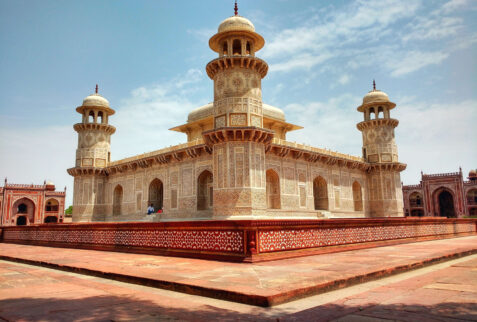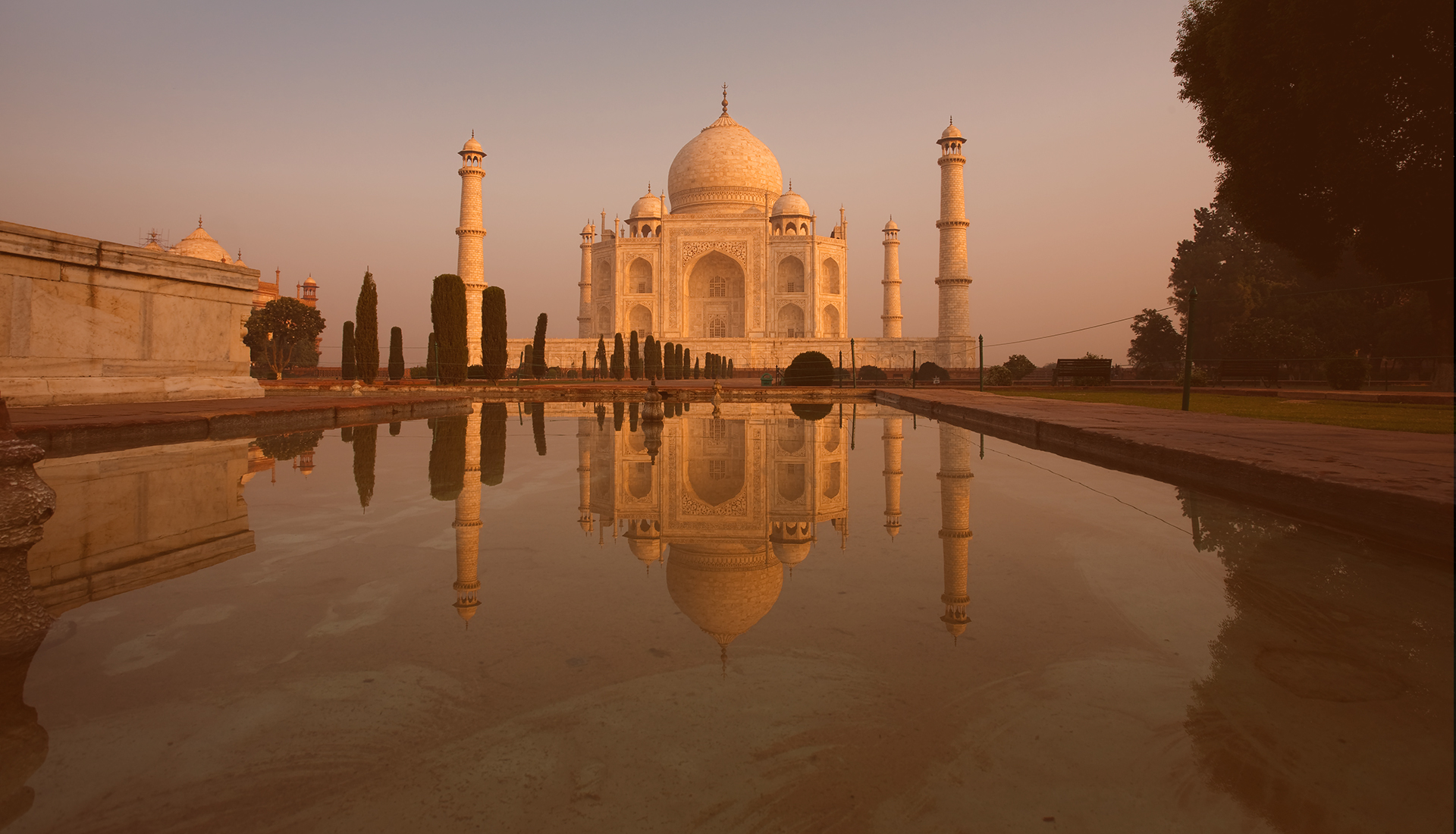Taj Mahal Agra
The Taj Mahal is widely considered one of the most beautiful buildings ever created. The exquisite marble structure in Agra, India, is a mausoleum, an enduring monument to the love of a husband for his favorite wife. It's also an eternal testament to the artistic and scientific accomplishments of a wealthy empire.
Shah Jahan, “the King of the World,” took control of the Mughal Empire throne in 1628 very much in love with the queen he dubbed Mumtaz Mahal or “Chosen One of the Palace.” The poets at Agra’s Mughal court said her beauty was such that the moon hid its face in shame before her.




Situated on the right bank of the Yamuna in a vast Mogul garden of some 17 ha, this funerary monument, bounded by four isolated minarets, reigns with its octagonal structure capped by a bulbous dome through the criss-cross of open perspectives offered by alleys or basins of water. The rigor of a perfect elevation of astonishing graphic purity is disguised and almost contradicted by the scintillation of a fairy-like decor where the white marble, the main building material, brings out and scintillates the floral arabesques, the decorative bands, and the calligraphic inscriptions which are incrusted in polychromatic pietra dura. The materials were brought in from all over India and central Asia and white Makrana marble from Jodhpur. Precious stones for the inlay came from Baghdad, Punjab, Egypt, Russia, Golconda, China, Afghanistan, Ceylon, Indian Ocean, and Persia. The unique Mughal style combines elements and styles of Persian, Central Asian, and Islamic architecture.


